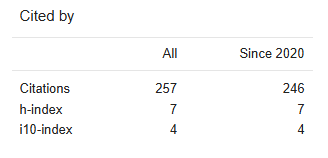Paper Details


Call For Papers
Volume 06, Issue 12
Frequency: 12 Issue per year
Paper Submission: Throughout the Month
Acceptance Notification: Within 2 days
Areas Covered: Multidisciplinary
Accepted Language: Multiple Languages
Journal Type: Online (e-Journal)
Announcement

Publish books with ISBN Number
- Edited Book
- Text Book
- Ph.D Thesis
- Conference Proceedings
ISSN Number:
2582-8568
Journal DOI No:
03.2021-11278686
Title:
"Faith and Power: The Interplay of Religion and Politics in the Delhi Sultanate"
Authors:
Cite this Article:
,
"Faith and Power: The Interplay of Religion and Politics in the Delhi Sultanate", International Research Journal of Humanities and Interdisciplinary Studies (www.irjhis.com), ISSN : 2582-8568, Volume: 5, Issue: 4, Year: April 2024, Page No : 52-57,
Available at : http://irjhis.com/paper/IRJHIS2404006.pdf
Abstract:
The Delhi Sultanate, a crucial period in Indian history from the thirteenth to sixteenth hundreds of years, was set apart by unified power under the Ruler, medieval components, and the development of strict strategies. It was a period of critical political changes with traditions like Slave, Khalji, Tughlaq, and Lodi leaving enduring engravings. The Sultanate's mix of Persian, Focal Asian, and Indian practices encouraged one-of-a-kind workmanship, writing, and music. Understanding it offers experiences into Islam's spread, Sufism's job, and administration challenges. Strict strategies fluctuated, from starting narrow-mindedness to syncretism under rulers like Akbar and a re-visitation of severity with Aurangzeb. The Sultanate's political construction brought together power, with the King as preeminent ruler, and authoritative divisions like iqtas and diwans. The military assumed a pivotal part, and Islamic regulation (Sharia) represented the overall set of laws. Concentrating on it enlightens India's complicated history, cultural transformations, and the effects of strict and political elements on its defeat: severe strategies, debilitating military, and strict partitions added to its decay.
Keywords:
Sufism, cultural transformation, iqtas, diwans, focal Asian
Publication Details:
Published Paper ID: IRJHIS2404006
Registration ID: 21378
Published In: Volume: 5, Issue: 4, Year: April 2024
Page No: 52-57
ISSN Number: 2582-8568
Download Full Paper: Click Here
Article Preview:





